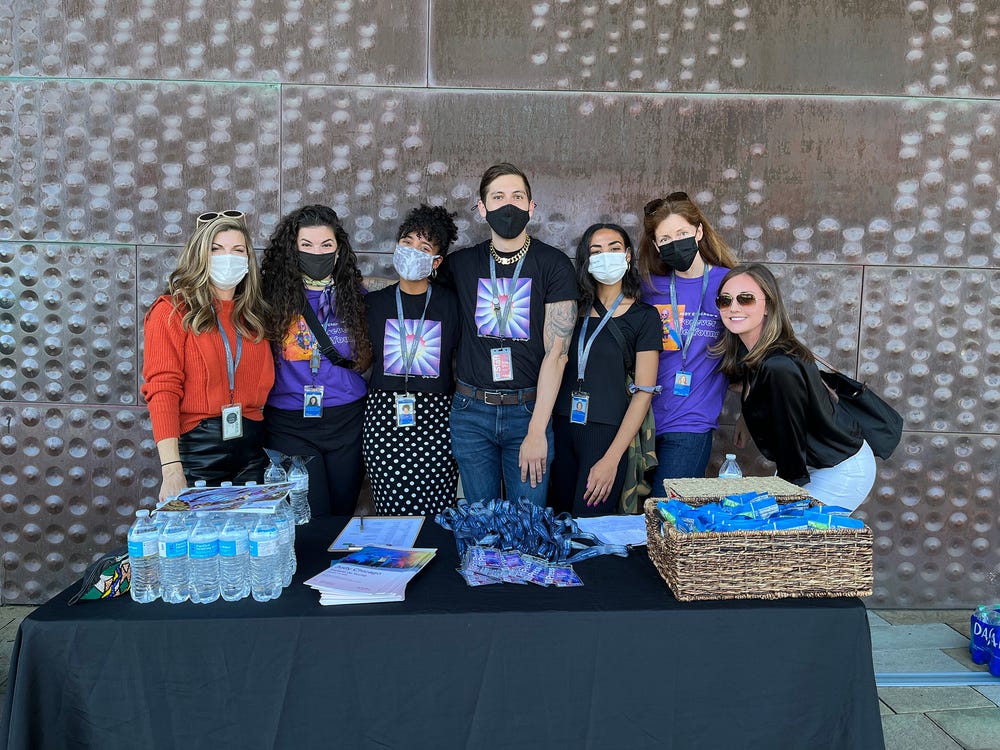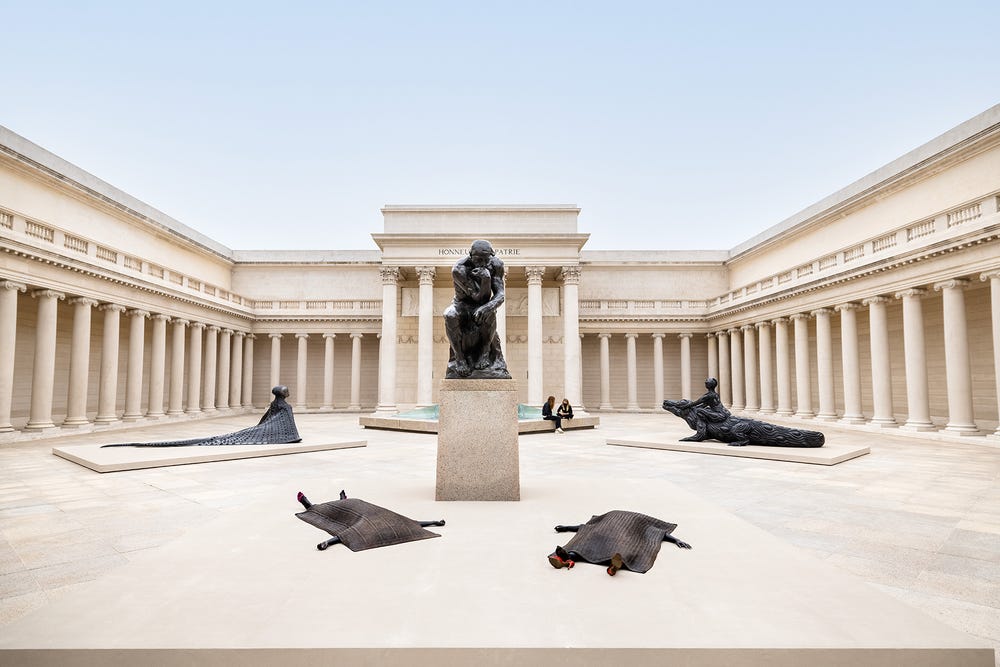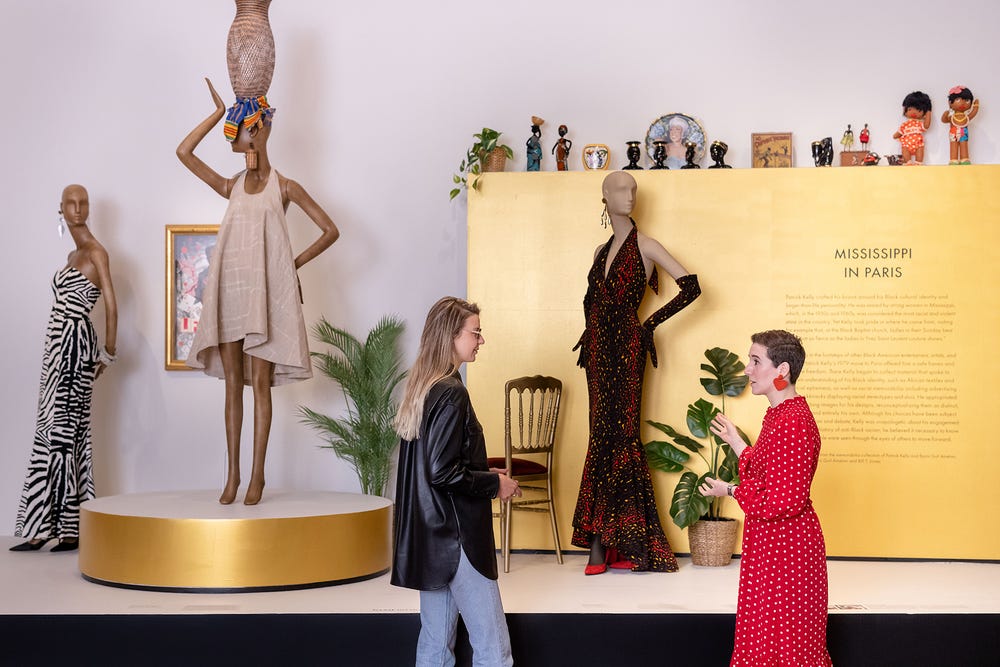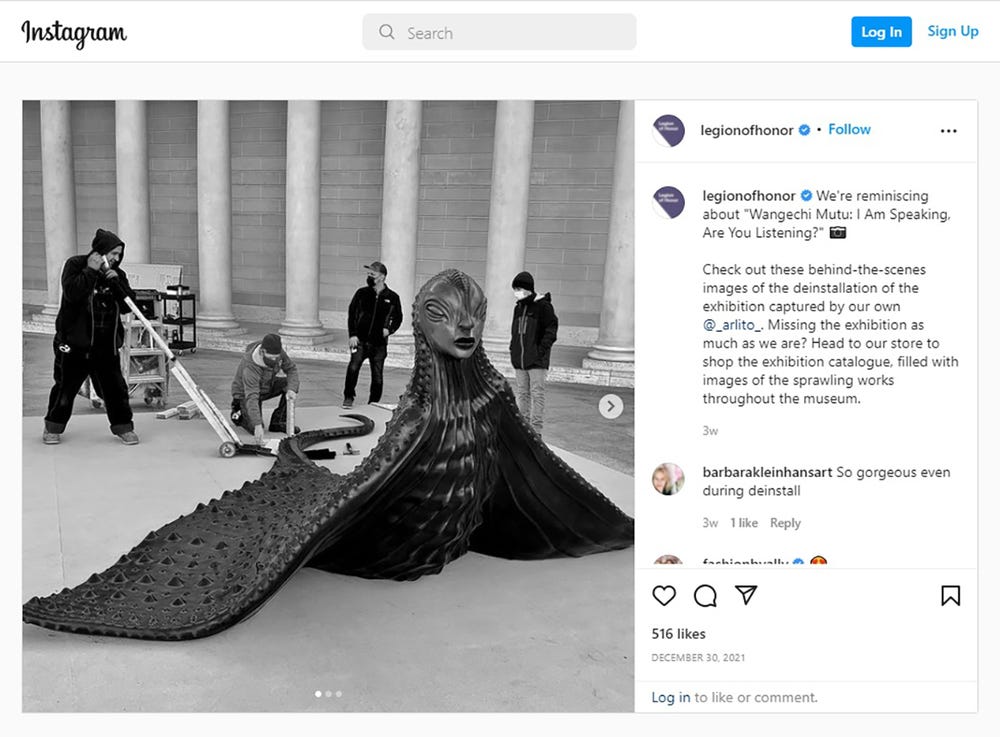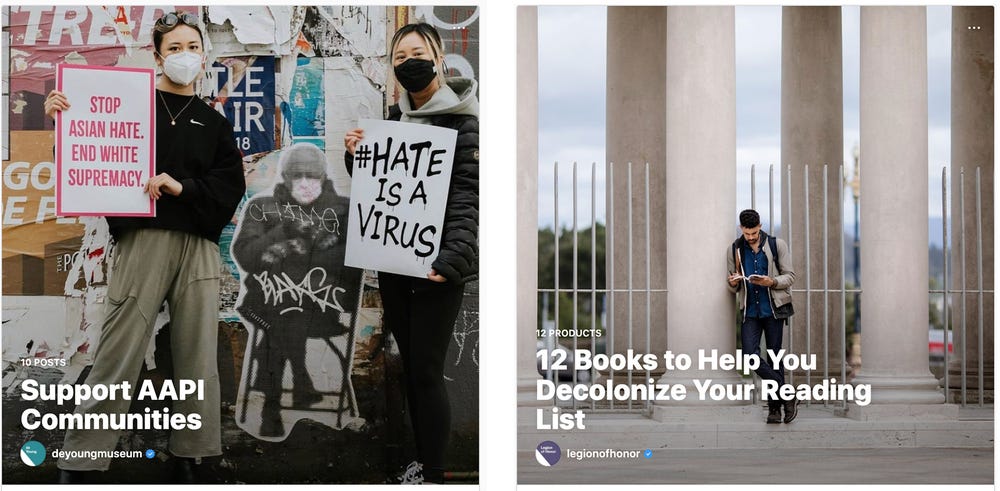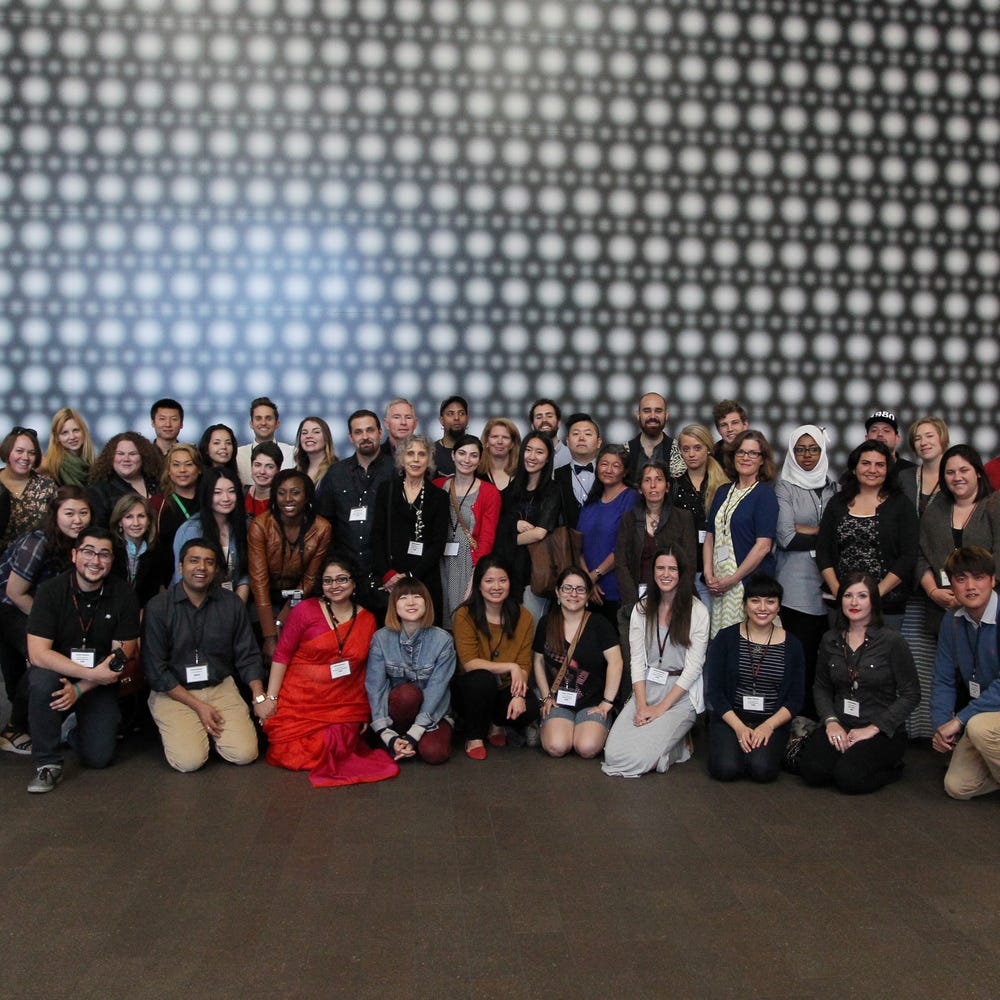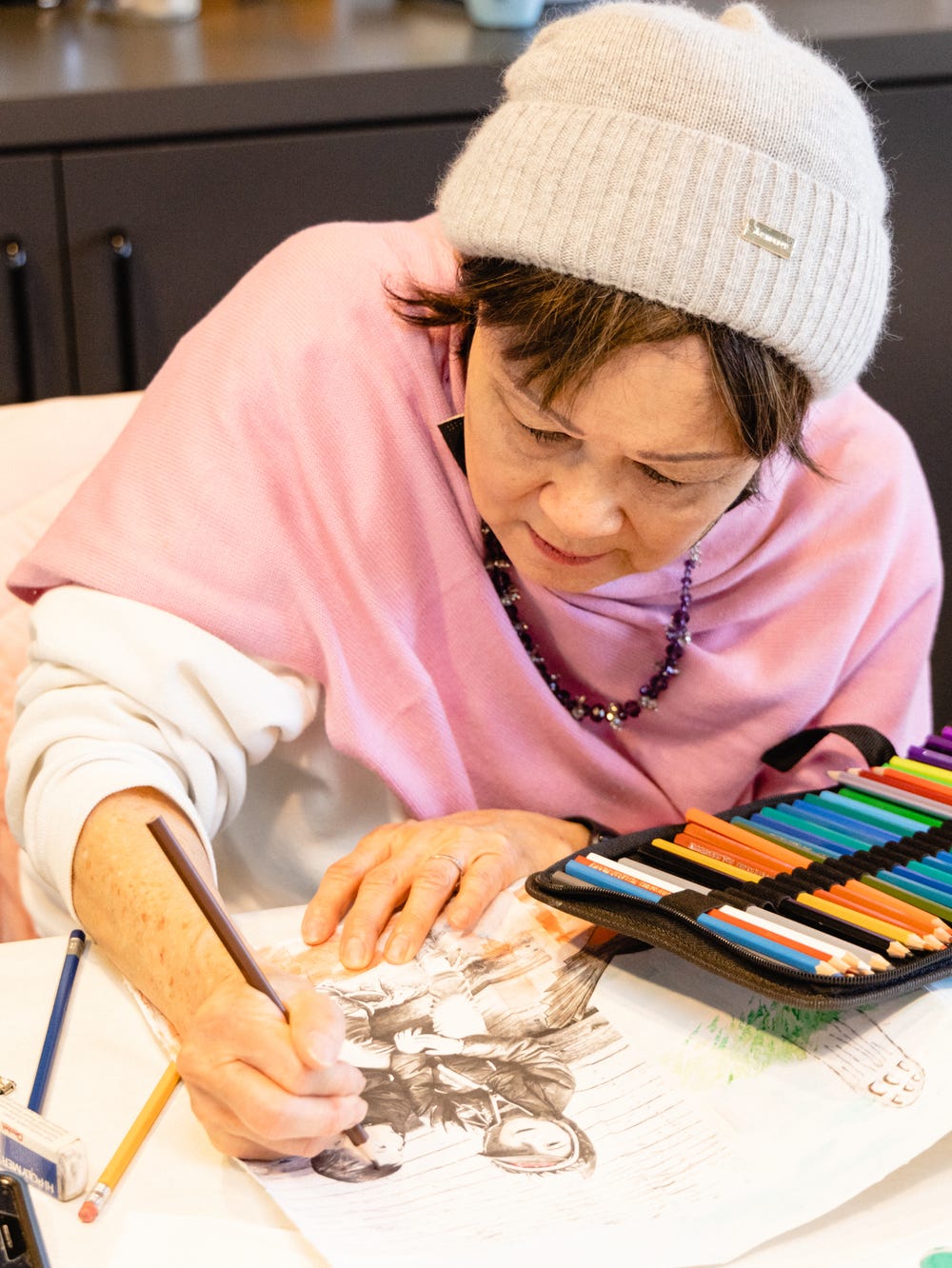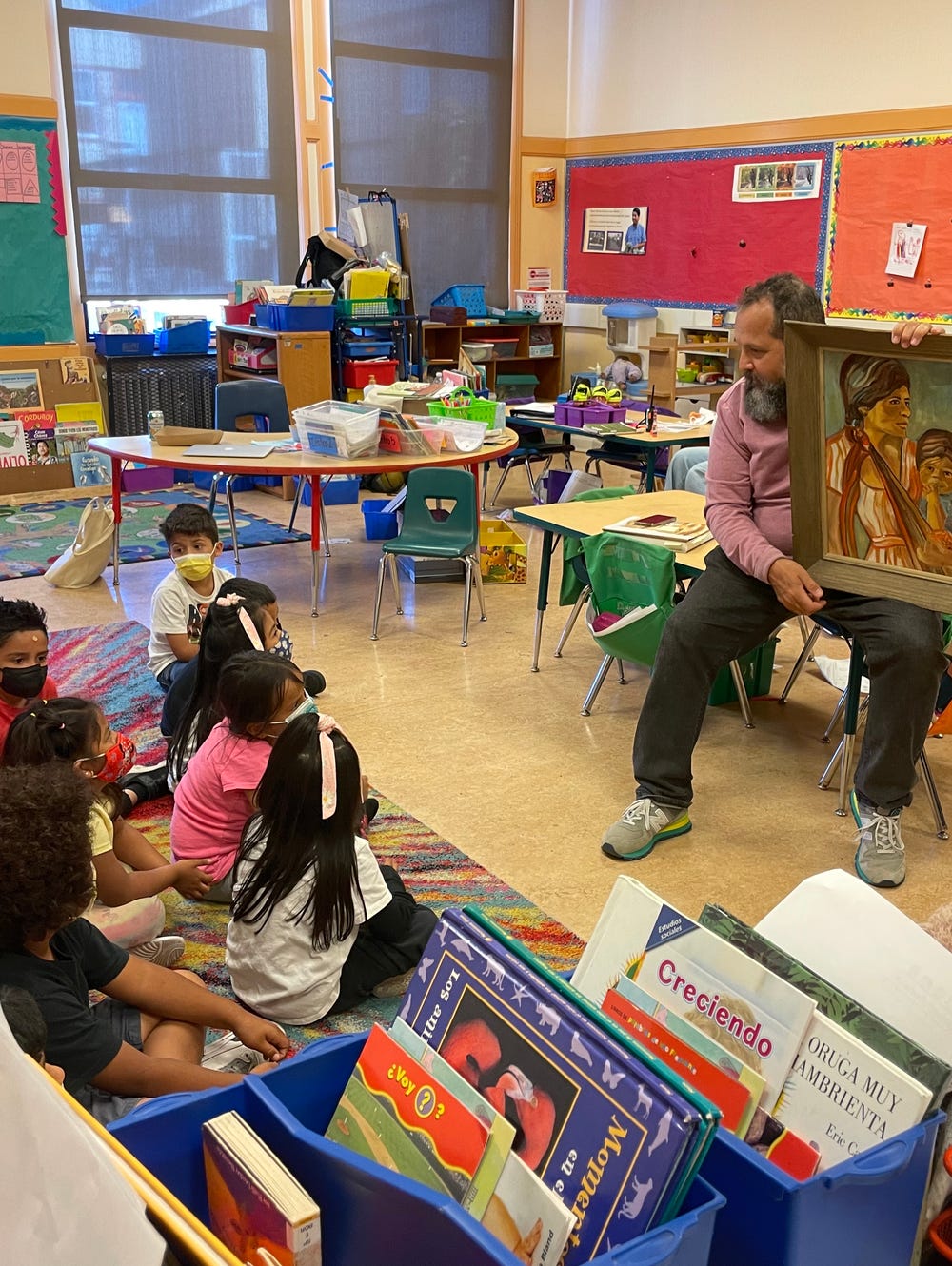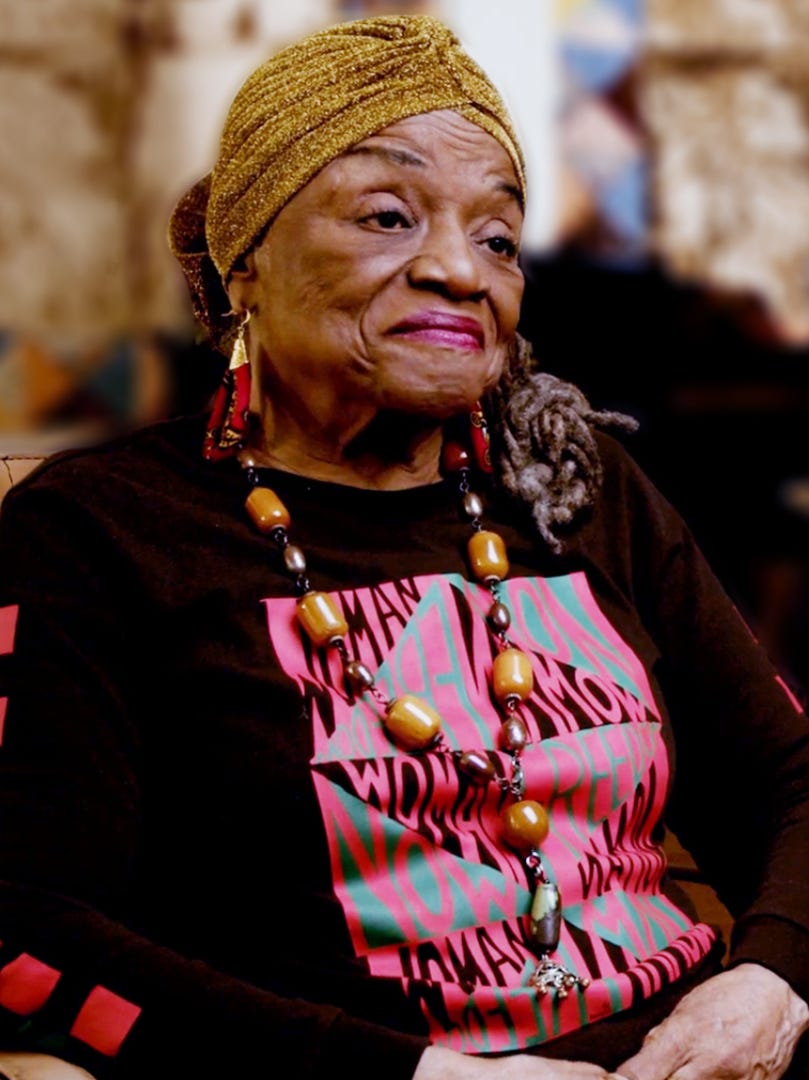More Than “Read, Like, Share”: Anti-Racism on the Museums’ Communication Team
By Maya Berry, Shaquille Heath, and Lily Kaplan
January 12, 2022
FAMSF Staff, 2021.
The communications department at the Fine Arts Museums is responsible for public relations, social media, and internal communications—and we handle a large volume of it. As part of that, we advocate for and promote the Museums’ DEIA work. We celebrate the organization’s progress, but maintain healthy doses of criticality and self-reflection. This is crucial for us, because we take seriously our obligation to communicate transparently and truthfully to our audiences.
Over the past two years, the communications team designated time and space for critical examination of our departmental work in alignment with the Museums’ commitment to anti-racism. Following this reflection, and institution-wide DEIA training facilitated by Be the Change Consulting, we convened a division summit to outline our department-specific DEIA goals. We determined that realizing these goals required us to shift priorities and budgets. Our team felt confident and purposeful in doing so. Here we share the progress we have made in the past year since our summit. We celebrate some wins and document areas where we desire to do more.
Communications \ Public Relations
The communications team’s focus has typically been to secure media stories and placements almost entirely around our special exhibition program. Within this context, our team has prioritized exhibitions based on gallery space and number of artworks. The bigger a show was, the more our team would work to publicize. We found that working in this nature often resulted in less attention and coverage for shows featuring artists of color and women artists, in addition to a neglect of other public programs and events. We felt there needed to be a larger focus on these areas, as well as on acquisitions, collections, and digital offerings, to emphasize all of the great work our colleagues were doing across the Museums, and a true push for the inclusion of artists whose work has been historically underrepresented, including BIPOC artists, women artists, and LGBTQ artists.
After our trainings with Be the Change, we discussed a variety of strategies to ensure our processes and workload emphasized DEIA values, in addition to an overall goal that promoted institutional work:
Overall Goal: Shift communications priorities from exhibition focus to long-term institutional brand building
Here’s an update on our progress . . .
1. Establish internal workflows that produce high-quality content no matter where the ideas come from.
Our team has worked to increase promotional efforts for exhibitions with stronger DEIA values (including historically excluded groups, those with different abilities, LGBTQ, and more), even when they are smaller shows or are located in smaller galleries.
Throughout this past year, this included exhibitions such as Wangechi Mutu: I Am Speaking, Are You Listening?, celebrated as one of the best exhibitions of the year; Hung Liu: Golden Gate (金門), receiving the most coverage an installation in Wilsey Court has ever secured; and Jules Tavernier and the Elem Pomo, which, although a one room show, received the promotional attention usually reserved for a much larger show. This is only a snapshot of the exhibitions we worked to uplift this year.
Wangechi Mutu at the Legion of Honor was highlighted as one of the Best Exhibition of 2021 by KQED. Installation view from Wangechi Mutu: I Am Speaking, Are You Listening? © Wangechi Mutu. Photo by Gary Sexton
2. Interact with a broader set of media representing different audiences.
The media we work to reach should mirror the full breadth of audiences we are inviting to the Museums. Our team spent hours researching niche and new-media publications across the Bay Area and nationally, serving readers we traditionally have not reached. We were thrilled to make new connections and invite these new contacts to media previews and press moments.
3. Give an equitable view of the Museums and our programming and connect with broader audiences through a wider range of Museum spokespeople.
Our team did its best to think critically this year about how we could utilize other incredible experts across the Museums outside of curatorial roles, as in this Architectural Digest story about our exhibition Patrick Kelly: Runway of Love, which includes the voice of Exhibition Designer Tristan Telander. This is an area our team will work on in the future, and we’re excited to continue exploring placements that feature different museum voices.
Both Tristan Telander, exhibition designer (left) and Laura Camerlengo, curator (right) were interviewed in a recent Architectural Digest piece about the Patrick Kelly exhibition at the de Young. Photo: Gary Sexton
4. Pivot from reporting only vanity metrics to also reflecting DEIA values.
We looked at the quality of the media stories produced, and not just the number of stories placed. Did that news story reach a different audience? Did it reach our local community? Will it provide insight for our visitors?
Our team worked hard this year to engage our local media contacts more and more. There are still lots of relationships and trust to build, and we look forward to spending this year deepening those relationships and ensuring our colleagues understand their importance.
Digital Engagement \ Social Media
The Digital Engagement department brings our Museums to life through our social media channels, with posts about our permanent collection, special exhibitions, and other institutional programs and priorities.
Looking at how to be actively anti-racist sent us on a journey of shifting our internal working practices—from planning to execution and measurement. While our communications counterparts defined one overarching goal with multiple strategies for achieving it, we outlined one goal for each phase of our workflow.
Here’s an update on our progress . . .
1. Establish internal workflows that produce high-quality content no matter where the ideas come from.
We asked ourselves: Where do good ideas for social media content come from? We recognize that they do not exclusively come from members of our digital engagement team. Acknowledging that fact sparked us to open our content brainstorming process to welcome any staff member with an idea for a social media post.
There are three things we needed to achieve to set this up: 1) give all non–marketing staff a basic understanding of social media, 2) share our strategic goals to help guide ideation, and 3) start the relationship by making sure everyone knows who the digital engagement team is and how they can reach us.
We did this by going “on a road” to various divisions, where we gave a brief social media 101 presentation, shared our strategic vision for the channels we oversee, and answered relevant questions.
Since then, we have published more than a dozen social posts that began as ideas from staff members. A recent example is when a colleague clued us into the incredible photography that one of our gallery technicians, Arlo Valera, was producing during artwork installations and de-installations. We shared a few of his photos on Instagram (see here), and met up to get acquainted. It was a very fun afternoon—one of those experiences that made us extra grateful to work at FAMSF.
A recent post from the Legion of Honor’s Instagram, featuring photography by Arlo Valera.
2. Ensure content is relevant and engaging for all communities in our diverse audience.
How do we talk about art in a way that will encourage whoever sees our post (regardless of race, gender, education level, and other factors) to learn more? This question prompted us to evaluate what images we share and the tone we use in our social posts.
Prior to our anti-racism summit, we defined our tone of voice as “a more accessible tone than in-gallery language and institutional publications.” We realized this misses the active opportunity that we have to use social media in the way individuals use it: to share their voice. If we believe that there is strength in listening to all voices in our community, then we need to uplift those voices.
Now that we’ve recognized our voice isn’t neutral, we are obligated to engage in meaningful conversations that our communities are having. One example of how we’ve done this is by expanding the cultural holidays that are celebrated on our social media channels. Over the past year, we have added to conversations happening on Trans Day of Visibility, Black History Month, Native American Heritage Month, and other important days throughout the year by using related artwork in our collection to spark dialogue.
Two recent guides from the de Young and Legion of Honor’s Instagrams.
In addition to the new work we’ve implemented, we would be remiss not to mention the diversity pledge that has been in effect since 2018. On the de Young museum’s Instagram page, two-thirds of the artwork we share is by artists who identify as nonwhite or nonmale. This is a drop in the bucket when you look at the amount of work that needs to be done to become completely anti-racist, but it’s a practice we are proud to maintain.
3. Evaluate how we measure success of our social posts to ensure we hold ourselves accountable to reaching and engaging diverse communities.
That social media post is now out there in the world for all to see, and it’s time to measure how successful it was. We use our two key performance indicators to do this—reach (how many people saw this post?) and engagement rate (of those people, what percentage liked it, commented on it, or shared it with a friend?). We then compare those metrics to other posts to gauge performance.
Sounds good? Not if you look at these performance indicators with an anti-racist lens. While this method of measurement is sound by most business’s standards, our role as a cultural institution requires us to go further. Those two metrics don’t measure who we are reaching and engaging. That is why the change that needs to happen in our measurement phase is simple: understanding the makeup of our audience. To us, each member of our audience is unique, and to engage with them and share relevant content, it would be helpful to know their gender, race, physical ability, age, and location. The social platforms we are active on provide us only with age and gender breakdowns, and our definition of gender goes beyond theirs (exclusively female and male). We can’t make progress on this goal until the platforms expand the demographic information they provide.
Conclusion
As we continue to engage in our DEIA work, the communications team (like our colleagues in other departments) acknowledges that the nature of this work means it is never complete. To hold ourselves accountable, we have regularly been sharing updates on this work within our department and are planning another division summit—to set another round of yearly goals. We are proud of our progress but simultaneously work to identify where we can do better. We ask ourselves: What is keeping us from getting there? And, what can we solve? Reminding ourselves and each other of our power, not our powerlessness.
Text by Maya Berry, digital engagement coordinator; Shaquille Heath, manager of Communications; and Lily Kaplan, digital engagement manager.
Learn more about DEIA work at the Fine Arts Museums.
